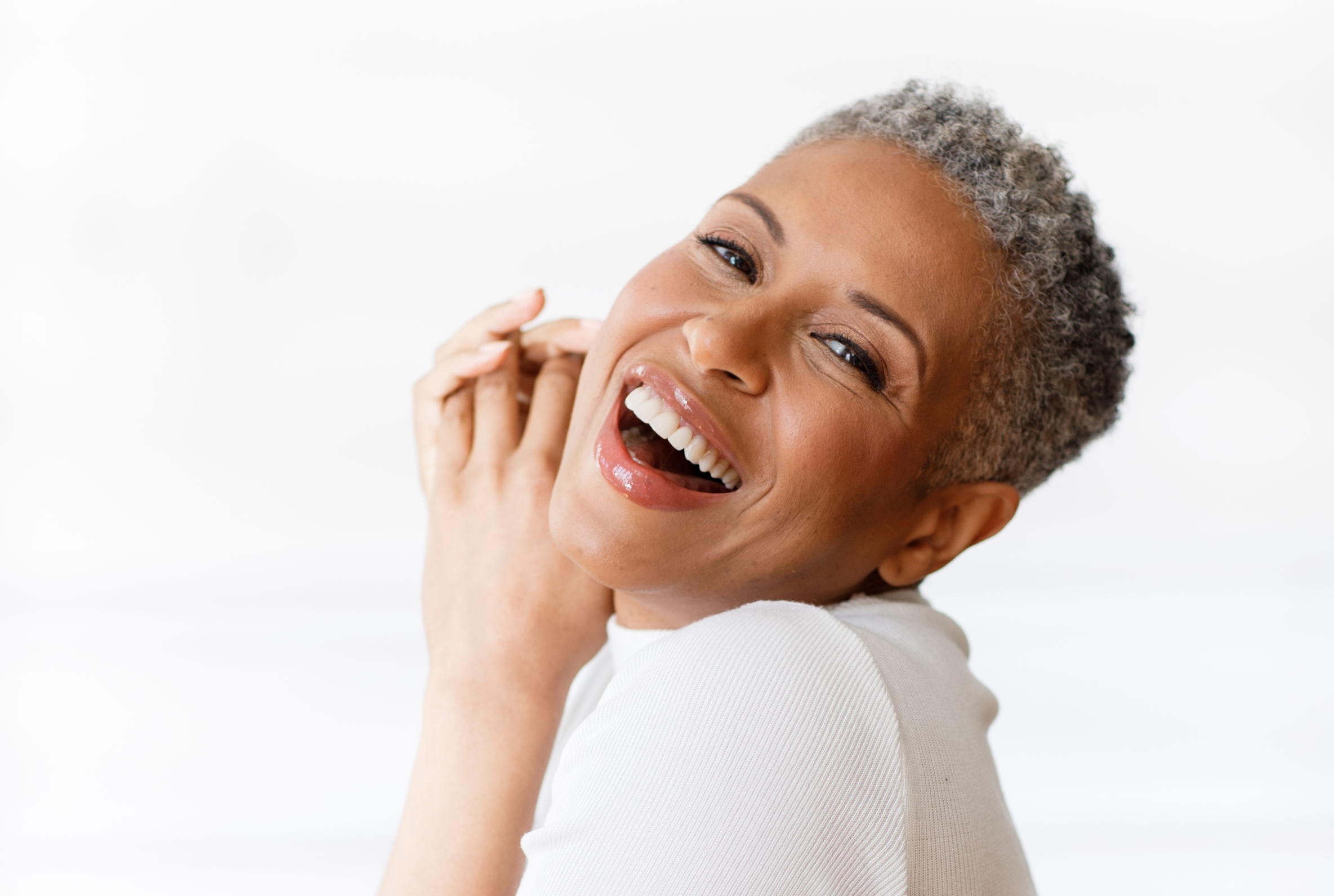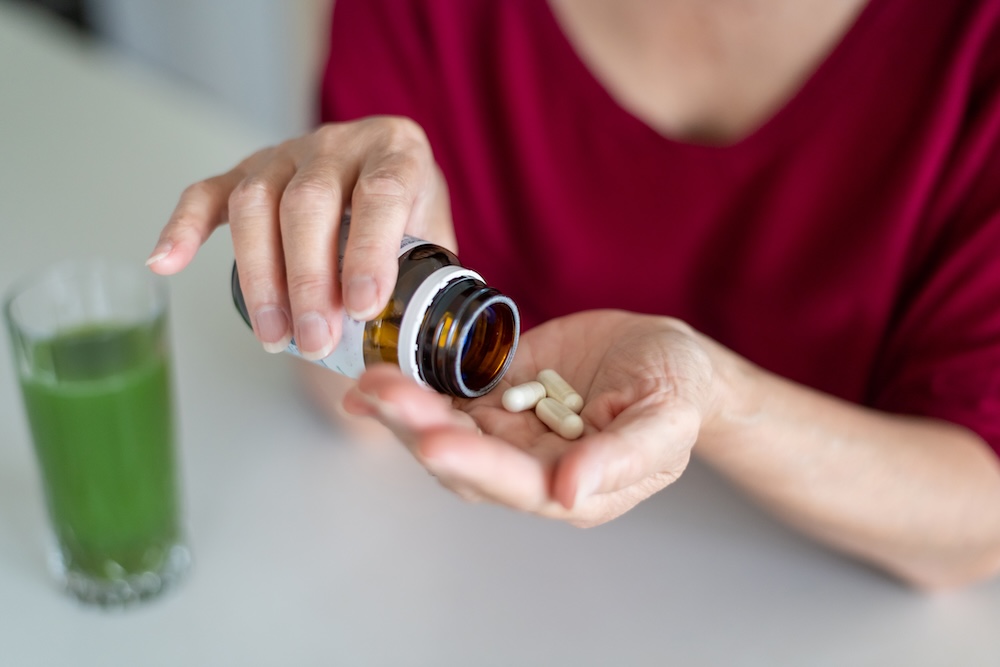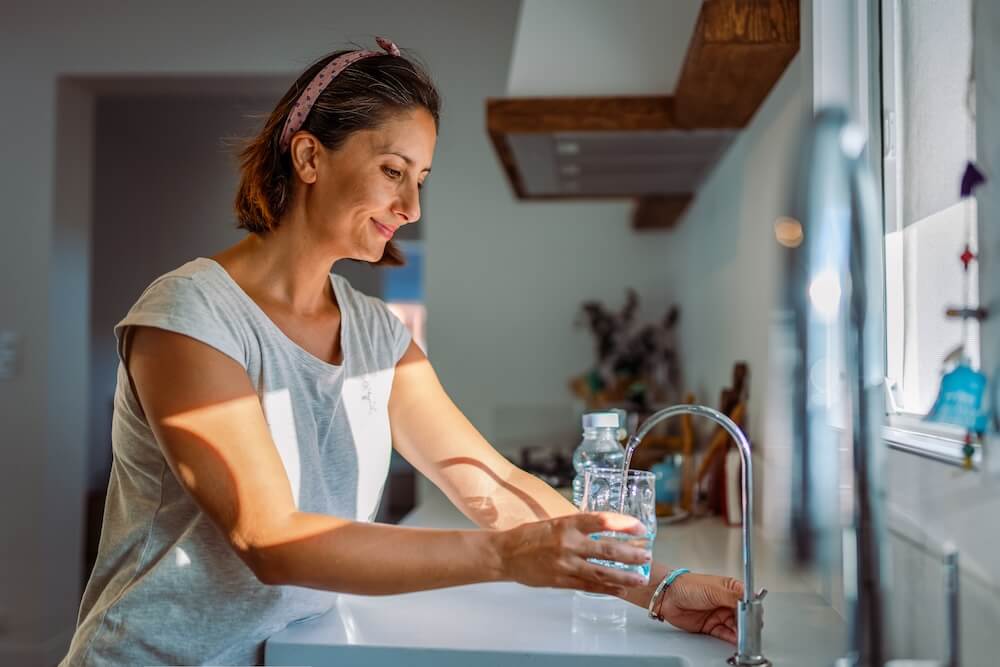Breakouts and acne in menopause might seem strange as this problem is more often associated with teenage years. It’s more common than you think and some women suffer in midlife, even if they didn’t when they were younger.
We spoke to Dr Sophie Shotter, medical and aesthetic specialist at Illuminate Skin Clinic, to discuss why menopause acne and breakouts can be an issue for some women – and the best ways to deal with spots, pimples and blemishes.
Find what you need quickly
- How do women feel when they come to you about menopause acne?
- Is there a difference between hormonal breakouts and acne and other types of breakouts?
- Why does bad skin happen in menopause?
- What about menopause acne and redness?
- What treatment works best for menopause acne?
- Skincare tips for menopause acne
- What lifestyle changes can help?
How do women feel when they come to you about menopause acne?
A lot of women can feel quite depressed when they come to see me. Acne and depression can be a vicious circle. The acne makes the sufferer feel unhappy and can cause social anxiety which subsequently increases the stress hormones which can worsen the acne. Like teenage acne, adult acne can have a really negative effect on sufferers. In our teens, spots are perceived as normal whereas in adulthood acne is rarer but it can have a profound effect on mental health, confidence and wellbeing. Having to adjust to menopause as well as having acne at 50 years old can be a difficult process to go through. Treatment should focus on minimising the impacts of menopausal acne on a patient’s life, as well as treating the underlying cause.
Is there a difference between hormonal breakouts and acne and other types of breakouts?
The main cause of breakouts and acne, whether that’s in teens or in adults who are dealing with menopause acne, is similar. The skin doesn’t exfoliate effectively which means that dead skin cells clog the pores rather than being shed. This leads to a build-up of sebum in the pores which is a perfect breeding ground for bacteria. Adult breakouts and acne can be triggered by a wide range of issues but can present particularly during menopause.
Read Kwavi’s story about menopause and acne.
Why does bad skin happen in menopause?
During menopause, oestrogen levels drop and our rate of skin exfoliation slows down. Hormonal changes can also lead to imbalances between oestrogen and testosterone.
If the testosterone levels are slightly higher in relation to the oestrogen, then sebum production in the skin can increase. This can result in acne during menopause or breakouts producing a surge of whiteheads, or more cystic under-the-skin type spots. Other factors such as dietary changes, medication side effects and stress can also be triggers.
What about menopause acne and redness?
I often see patients with acne rosacea which has been misdiagnosed as ‘just acne’. Unfortunately the treatment for the two conditions is very different. Rosacea is a skin barrier problem (when your skin becomes impaired and doesn’t function properly) whereas acne is a disease of the skin which is usually oily and more resilient. If you know what to look for it is easy to distinguish between the two conditions.
Rosacea will most commonly affect the cheeks and nose, whereas acne can affect the whole face as well as other body areas. Small inflamed bumps can appear in rosacea alongside other symptoms such as redness, sensitivity and dilated blood vessels. In acne, the skin contains a variety of different grades such as blackheads, whiteheads as well as red bumps.
Read more about rosacea in menopause.
Topical treatments for acne will typically involve ingredients like salicylic acid or benzoyl peroxide. Unfortunately, using these on rosacea will increase the flare-up rather than improve it. Rosacea needs products aimed at barrier repair which contain gentler ingredients such as polyhydroxy acids (known as PHAs) – some rosacea will also need antibiotics topically and orally.
What treatment works best for menopause acne?
Obviously each case of menopause acne is different and you should first visit a professional to establish what will work best for you. Whatever you’re dealing with, there is a solution. Over the years, I have tried and tested a large number of skincare products and in-clinic treatments and there are definitely things that work.
Antibiotics
Personally, I’m not a huge fan of antibiotics for acne and antibiotic resistance is already a big problem in the UK.
Steroid cream
Some types of acne will respond well to steroid cream. I always look at whether there is a hormonal imbalance and if the hormones are out of kilter, topical creams will struggle to address the problem.
Hormone balancing
If hormones are driving the issue, hormone balancing medication will help.
Lifestyle
A starting point is a thorough assessment of lifestyle and diet to see if there are changes that can be helpful, or supplements which may boost results (zinc can often be helpful for example).
For best results, I like to combine at-home skincare products with in-clinic treatments, such as chemical peels and hydrafacials. These can both really help clear a challenged complexion and keep it that way, whether it’s the odd breakout or more serious acne.
Skincare tips for menopause acne
1 – Choose your cleanser carefully
A good cleanser is key – ideally one with not too many active ingredients. Potent ingredients such as Vitamin C can often cause a reaction. If it’s just acne (and there is no rosacea present), I’d suggest trying a cleanser with some salicylic acid.
2 – Look for a moisturiser with alpha hydroxy acids (AHAs)
With any breakouts try to stay away from moisturisers which contain rich ceramides as this may make the problem worse. Instead look for moisturisers with alpha hydroxy acids (AHAs) to boost exfoliation and cell turnover.
3 – Use retinol
Topical retinoid creams can be a very good option for treating acne and will leave your skin glowing and smooth too. They work on a cellular level to help kickstart cell turnover, reduce inflammation and reduce oil production – all critical for keeping pores clear and skin free of breakouts. They can also help fade stubborn acne scars and marks that linger after a breakout.
When using any retinol product for the first time, start by applying a pea-sized amount of product:
- Once a week at night for one week
- Twice a week for two weeks
- Three times a week at night for three weeks
The goal is to work your way up to nightly use without irritation.
4 – Consider benzoyl peroxide
Benzoyl peroxide has been used for many years for treating acne, and you can get it in a prescription form. For anyone with mild to moderate acne, there are many over-the-counter products that you can try, all with varied strengths of the ingredient.
It works by killing the c. acnes (the harmful bacteria on your skin responsible for breakouts) and helps minimise oil production, sheds pore-clogging dead skin cells and reduces the redness and swelling associated with inflammatory pimples. However, it can be quite drying, so I’d always suggest seeing a professional for in-clinic advice first and they will tailor a regime and products which will suit you best.
5 – Steroids for very persistent or extreme breakouts
Occasionally breakouts, particularly nodules and cysts can be large and painful or just won’t get better, no matter what you try. In this case steroid injections may be a good option. The steroid acts as a potent anti-inflammatory, stopping the inflammation and helping the skin to heal faster.
What lifestyle changes can help?
Adding phytoestrogens (things like tofu, miso and soy beans) to your diet may help as it can help counteract the testosterone. Reducing sugar and dairy may also help. Limiting favourite foods may not be easy but think of it as a 9/10 rule. Try to be good 90% of the time but enjoy the remaining 10%!
Find out more about skin changes in menopause.
Read more about menopause on our blog or in our symptoms library.





